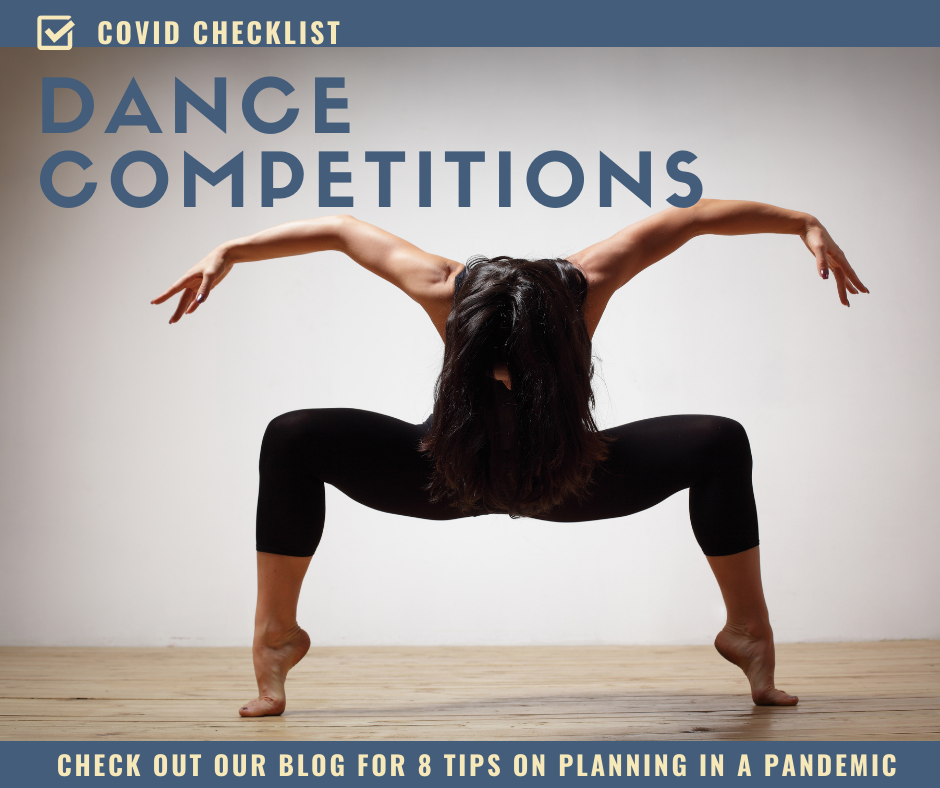Feb 16, 2021
Eight Tips for Planning a Dance Competition in a Pandemic

You’ve let go of the idea of an auditorium packed with dancers and spectators and have officially pivoted to a dance competition operating under pandemic rules. Other than less people and a whole lot of cleaning, where should you start?
- TAP INTO YOUR VENUE: First, connect with your venue to figure out what guidance they can share with you and what resources they have available for your use. Putting on events is their daily job and they are living these “COVID event rules” on the regular, so use their knowledge and expertise.
- CAPACITY: Figure out what capacity rules apply in the state you are hosting the event. In Minnesota, dance competitions are referencing two sets of guidance from the State of Minnesota. Indoor Entertainment and Meeting Venues and Organized Sports guidance.
- SCHEDULING: Once you understand the capacity limits of your dancers, as well as spectators, building your daily schedule will be next. You’ll want to consider things like cleaning time for the stage and props, time to move dancers from a holding location to the competition location, and scheduling studios in blocks of time to eliminate the need for dancers to leave and then return later in the day, etc.
- WARM-UP AREAS: COVID protocols are all about creating a “controlled and predictable” scenario, so allowing dancers to scatter all over the place to warm up is not going to work for your capacity requirements. Develop “studio” holding locations and warm-up locations to keep a controlled environment.
- EVENT FLOW: Develop a set direction of moving about the venue (counterclockwise for example). This plan will help eliminate any cross traffic of guests and dancers. In addition to preventing cross traffic, a well designed flow makes the day go that much smoother.
- PROP HANDLING: By now, we know that cleaning is a given for any shared equipment, but don’t forget about props! Read the state’s guidance to determine if you need to make any adjustments to props. Consider limiting the size to a handheld prop that only one person handles.
- SPECTATORS: Using the capacity guidelines, you will need to determine if you are permitting spectators at the event and if so, if there is a limit to how many can attend per dancer. Additionally, if your state requires it, you may need to adjust to advance reservations, pre-determined entry and exit times, and specified entrances/exits to access the venue. Many states also require documentation of who was on-site for contact tracing.
- PREPAREDNESS PLAN: Without a doubt, having a COVID preparedness plan in place is a must when planning anything in a pandemic. Utilize your state’s resources for what must be included in that plan. Chances are, your venue can guide you to a helpful list of what needs to be addressed. Once developed, share your plan on your website and communicate out to your dancers, guests and workers how you expect the event to go.
We aren’t going to lie…your dance competition “to do” list just got longer. But is it worth it when the lights come on, the music fills the room and the cheers start ensuing? Absolutely.